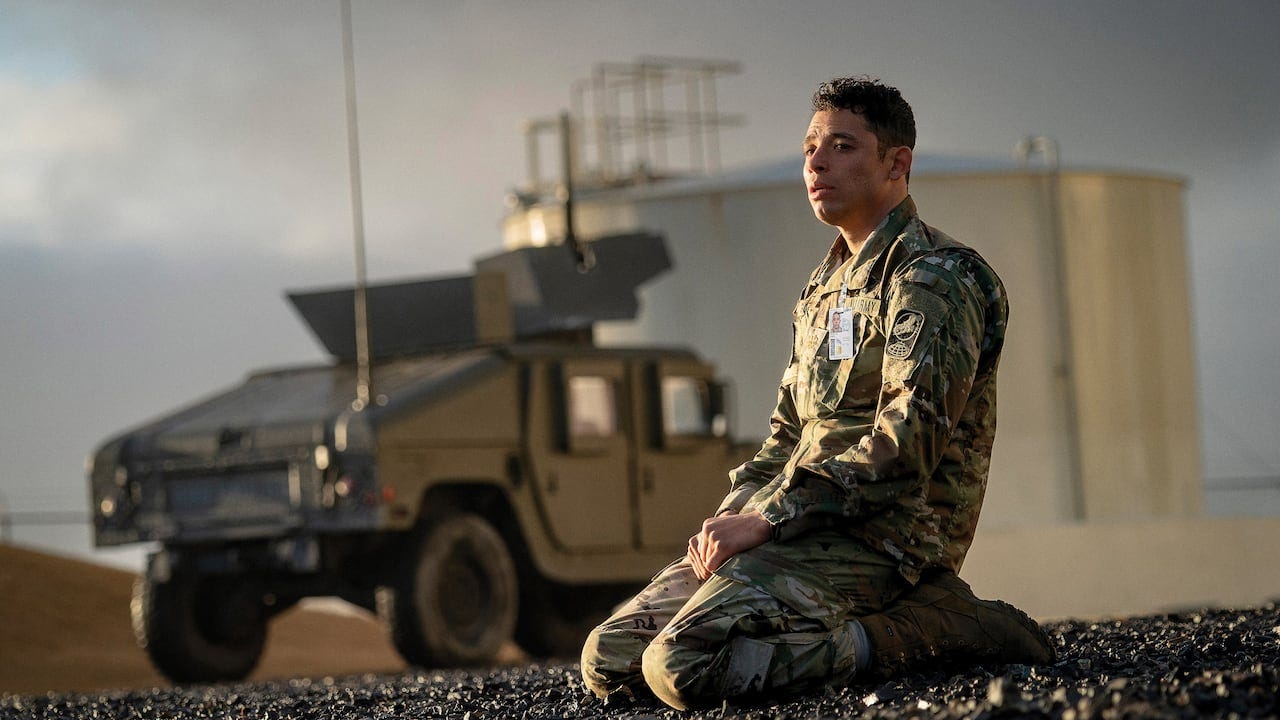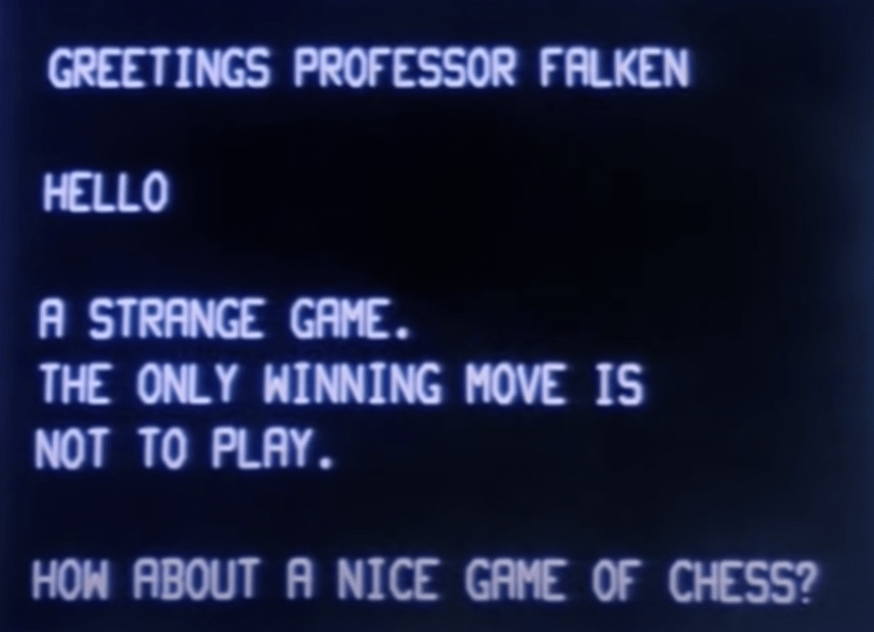A Choice of Surrender or Suicide
Review of "A House of Dynamite"
I’ll give this in three parts: No Spoiler, Light Spoiler, and Full Spoiler, which includes my thoughts on the moral choices.
NO SPOILER: I’m a child of the 80s who was reaching adolescence during the Reagan Administration. We were all terrified of nuclear war, and we didn’t have the comfort of “Duck and Cover” platitudes of the generation before. We watched Wargames and The Day After. We all knew if it happened, we were all dead. My way to cope with that was to geek out as much as I could about nuclear weapons and delivery systems. Megatonnage, MIRVS, Circle of Impact. I watched every Cold War movie I could get - Fail-Safe, Dr Strangelove, Threads, Crimson Tide, etc. That’s continued to this day. I’ve been an “Atomic Tourist” all over the US and spelunked abandoned Nike missile sites. I read Annie Jacobsen’s recent book, Nuclear War (from which House of Dynamite draws some inspiration), in the course of 24 hours. Director Kathryn Bigelow (of The Hurt Locker and Zero Dark Thirty fame) directs a stellar cast in a multi-perspective movie that I think achieves exactly what she intended it to. This is a psychological drama - no serious action, gore, or horror. It is heart-pounding and well worth a watch if the subject won’t keep you up at night. You’ll note that reviews are decidedly mixed on social media. I think negative reviews 1. Don’t understand the genre of films about nuclear war, and 2. Either disagree with or don’t understand the place Bigelow wants us to be at the end of the film. House of Dynamite is available to stream on Netflix.
LIGHT SPOILER: If it helps you decide whether or not to watch this, you WILL NOT see people being blown apart or cities decimated, or the effects of radiation poisoning. This is not The Day After, it’s the day before. The basic premise (Which you’ll see in the first few minutes) is that someone, unknown, has launched one ICBM at the United States from the Pacific Ocean. The rest of the movie dramatizes how American command and control, as well as missile defense, could play out in that scenario. The movie follows the perspective of one element of command and control, then rewinds itself to show another element. I will register a suicide trigger warning for the movie.
FULL SPOILER: We find out the missile is headed towards Chicago. The movie ends before impact. We don’t know who fired it, and we don’t know if it even carries a nuclear warhead. We don’t know that if it does, the warhead will actually detonate. This is all because the story Bigelow wants to tell really has nothing to do with the horrors of nuclear war. It also doesn’t have to do with personalities - everyone, from the President down, in this scenario is at least competent and empathetic. The STRATCOM commander is the closest thing to a Strangelovian character in this movie, but he’s not looking forward to a nuclear war. The real star of this movie is the actual command and control apparatus for our nuclear weapons. The point is that after the launch of a missile at the US, the apparatus has at most around 30 minutes (For an ICBM on the other side of the world) to as little as 6 minutes (for a sub-launched missile) before impact. It is also completely dependent on the POTUS, who holds sole authority for the release of nuclear weapons. By ending the film before the actual detonation (or not), Bigelow leaves us asking the right questions that might be resolved if we knew the result, and those questions concern whether or not we are okay with this status quo.
When atomic weapons were first developed at the end of WW2, they were considered bigger versions of conventional bombs. They were originally under the control of air corps generals just the same way that any other weapon was. Post WWII, the Truman Administration moved control of the use of the weapons exclusively to the POTUS, thus setting them apart from all other weapons. As delivery systems moved from (stoppable) bombers to (virtually unstoppable) ICBMs and (virtually unstoppable AND less warning) SLBMs, the doctrine of Mutual Assured Destruction (MAD) developed, which stated that neither side would start a nuclear war, because each side knew it would end with its own destruction. The USA’s deployment of nuclear weapons was based on a policy of deterrence, meaning that we thought we needed to maintain 1. First Strike capability, 2. A credible retaliatory capability if struck first, and 3. Singular, personal control of the arsenal so no enemy could think we would hesitate. All of this remains part of the United States’ nuclear doctrine today.
The question both House of Dynamite and Jacobsen’s Nuclear War raises has to do with the evolving threat. MAD assumes major actors and crippling strikes. Both ask the question of what happens when it’s one (House of Dynamite) or two (Nuclear War) missiles. Is our nuclear doctrine able to deal with that more minor but horrific threat? The answer from both is “Likely not.” There have been movements during the ensuing decades to have the United States disavow first strike capability, and questions about whether the POTUS should have sole command of the arsenal (other than in cases of a incoming decapitating first strike), but those have gone nowhere. We still work under the assumption that a total thermonuclear war between major powers may break out at any second.
At the end of the movie, we are left with the question, “What should the president do?” The missile is inbound, and STRATCOM is urging a retaliatory strike against “Our enemies” so that we don’t look weak. The answer seems obvious to me. He should do nothing. Yes, it’s very possible that Chicago will be destroyed and around ten million people might die, but that’s out of his control. He cannot do a thing to stop that. He gets to decide how many more millions will die in the next hour or so and that should be his only consideration.
Perhaps (but not in my estimation) this would be different if the incoming strike were a “decapitation” strike on DC (as it is in Nuclear War) and we were concerned about maintaining command and control of the arsenal. But it’s not. The president is safe, none of the three Nuclear control centers is under threat, and the Strategic Airborne Command Post is also intact. There is no threat to any part of the US Nuclear triad. Therefore, the US preserves all of its strike capabilities.
In addition, we don’t know who the attacker is, so a retaliatory strike at this point would assume at least Russia, China, and North Korea, all of whom would counter-launch, effectively ending the world. If any of these powers launched, we would have time to respond. At one point in the film, the president says that doing nothing would be, in effect, surrendering. The deputy Secretary of Defense says, “Sir, your choice is surrender or suicide.”
The fact that this movie about nuclear war does not actually depict a nuclear war is what makes it so interesting. Even Oppenheimer bowed to the perceived need to show the horrors. In our time, we are aware of the horrors, but very few of us seem concerned about the fact that we could be so close. There is horror here, but it lies in the realizations the characters have and the decisions they must make, caught up in a technological system that moves inexorably forward towards incalculable death. As noted in Wargames, the only way to win Global Thermonuclear War is not to play. Perhaps it’s time to reevaluate having a “no first use” doctrine and to broaden the base of nuclear decision-making.






